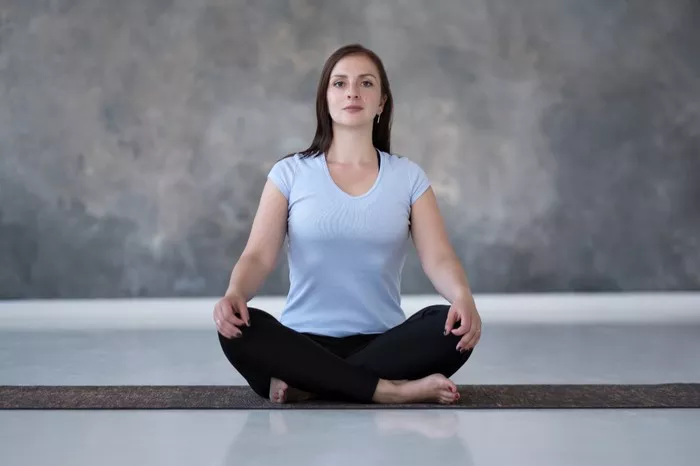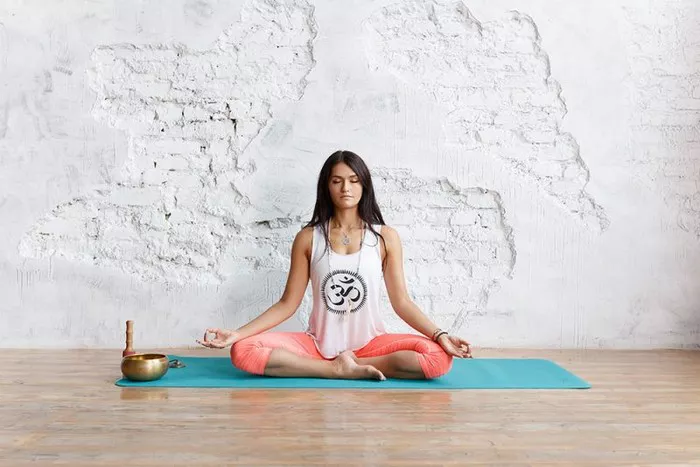Downward Dog, or Adho Mukha Svanasana, is one of the most iconic and fundamental poses in yoga. It is recognized worldwide, both for its distinct shape and for its many benefits, which is why it is often used in a variety of yoga practices. Whether you are a beginner or an experienced practitioner, you’ve likely encountered this pose in your yoga journey. Despite its simplicity, Downward Dog offers an incredible range of physical, mental, and emotional benefits.
In this article, we will delve into the purpose of Downward Dog in yoga, exploring its anatomical and physiological effects, its role in yoga sequences, and its deeper meaning in the practice of yoga as a whole. We will also look at the modifications and variations of this pose, and how to practice it safely and effectively to reap its full benefits.
1. The Anatomy of Downward Dog
To understand the purpose of Downward Dog, it’s important to first understand the mechanics of the pose. In this posture, the body forms an inverted “V” shape, with the feet grounded at the mat, the hands pressed firmly into the floor, and the hips lifted high. This position creates a deep stretch along the posterior chain, which includes the muscles of the back, hamstrings, calves, and arms.
The key actions in Downward Dog include:
Grounding the hands and feet: The hands are shoulder-width apart, with fingers spread wide, and the feet are hip-width apart, pressing firmly into the mat. This grounding creates a stable foundation, helping to maintain balance and alignment.
Lifting the hips: The hips are lifted upwards towards the ceiling, creating length in the spine and stretching the backs of the legs. The lift of the hips also facilitates a stretch in the upper body and neck.
Straightening the legs (or keeping a slight bend): The legs are encouraged to straighten, although some practitioners may need to keep a slight bend in the knees to avoid strain. Straightening the legs helps to stretch the hamstrings, calves, and lower back.
Engaging the core and thighs: To support the body and avoid collapsing in the lower back, the core (abdominals) and thighs are engaged, which stabilizes the body and ensures alignment.
2. The Physical Benefits of Downward Dog
Downward Dog is often considered a full-body stretch, and for good reason. It targets multiple areas of the body simultaneously, offering a variety of physical benefits that enhance flexibility, strength, and overall well-being. Below are some of the key physical benefits:
Lengthens the Spine
One of the most significant benefits of Downward Dog is that it provides a deep stretch for the entire spine. By lifting the hips toward the ceiling and pressing the hands and feet into the ground, the spine lengthens, releasing tension in the back and promoting spinal health. Over time, this lengthening action can help improve posture, reduce back pain, and increase spinal mobility.
Stretches the Hamstrings, Calves, and Shoulders
Downward Dog is particularly effective in targeting the hamstrings, calves, and shoulders. The pose stretches the backs of the legs, which can alleviate tightness from sitting for long periods or from activities that involve repetitive use of the legs. Additionally, the pose provides a stretch to the calves, which can improve ankle flexibility and mobility.
The shoulders also receive a gentle stretch, as the arms are actively engaged in pressing the hands into the floor. This helps to open up the chest, counteract rounded shoulders, and improve shoulder mobility.
Strengthens the Core and Arms
While Downward Dog is known for its stretch, it also builds strength, especially in the arms, core, and legs. The arms bear the weight of the upper body, requiring significant engagement from the shoulder muscles and triceps. Meanwhile, the core is activated to maintain stability and prevent sagging in the lower back. The legs also work to lift the hips and stabilize the pose.
Improves Balance and Coordination
By requiring the practitioner to balance on the hands and feet, Downward Dog helps to improve overall balance and coordination. The engagement of the core muscles, along with the need to stabilize the hips and shoulders, develops proprioception – the body’s ability to sense its position in space. As you practice the pose, you may notice an improvement in your ability to balance in other postures as well.
Relieves Tension and Stress
Downward Dog helps relieve tension, particularly in the back and neck, areas where stress tends to accumulate. The gentle inversion (with the head below the heart) promotes circulation, which can help to reduce muscle tightness and increase energy flow throughout the body. By encouraging a deep breath and calming the mind, Downward Dog can also help alleviate mental tension, making it an effective pose for stress relief.
3. Downward Dog in the Context of a Yoga Sequence
In addition to its physical benefits, Downward Dog plays a vital role in many yoga sequences. It often serves as both a warm-up and a transition pose, connecting other postures and helping to link the breath with movement. Below are some key reasons why Downward Dog is included in a wide range of yoga practices:
A Restorative Pose
Although Downward Dog is not necessarily a “restorative” pose in the traditional sense, it serves as a moment of respite within many yoga sequences. It provides a chance to stretch and reset, offering a break between more intense poses, especially in sequences such as Surya Namaskar (Sun Salutation), where it is repeated multiple times.
A Counterpose to Backbends
Downward Dog is often used as a counterpose to backbends, as it stretches the lower back and lengthens the spine. After practicing poses like Cobra (Bhujangasana) or Wheel (Urdhva Dhanurasana), Downward Dog helps to release tension in the back and hips, restoring balance to the body.
An Inversion Pose
As a mild inversion (where the head is lower than the heart), Downward Dog provides some of the benefits of more advanced inversion poses, such as Headstand or Shoulderstand. Inversions are known to increase circulation, improve energy flow, and promote mental clarity. Downward Dog is often used as a safer and more accessible alternative for beginners or those who are not yet comfortable with full inversions.
A Transition Pose
In many yoga sequences, Downward Dog serves as a transition between different postures. For example, in Surya Namaskar, practitioners move from one standing posture to another through a flow of movements that includes a brief pause in Downward Dog. It helps to reset the body between poses and provides a moment to re-establish breath and focus.
4. Mental and Emotional Benefits of Downward Dog
While Downward Dog offers numerous physical benefits, its effects are not limited to the body. Yoga, in its essence, is a mind-body practice, and the postures are designed to nurture both the physical and mental aspects of well-being. Here are some of the mental and emotional benefits of practicing Downward Dog:
Enhances Focus and Clarity
As a full-body pose that requires balance, alignment, and concentration, Downward Dog helps to sharpen mental focus. The practice of aligning the body in this posture encourages mindfulness and concentration, helping practitioners stay present in the moment. This focus can be carried over to other areas of life, leading to greater clarity and a heightened sense of awareness.
Calms the Mind
Downward Dog can have a calming effect on the nervous system, particularly when practiced with mindful breathing. The act of focusing on the breath and maintaining a steady rhythm helps to reduce mental clutter and anxiety. By incorporating a few moments of deep breathing in this pose, practitioners may experience a reduction in stress and an overall sense of relaxation.
Builds Confidence
For many practitioners, Downward Dog is a foundational pose that helps build confidence in their yoga practice. As a pose that requires both strength and flexibility, mastering Downward Dog can give a sense of accomplishment and empower practitioners to approach more advanced postures with greater ease.
5. Common Mistakes and How to Avoid Them
While Downward Dog is a relatively simple pose, there are a few common mistakes that can undermine its effectiveness or even cause injury. Here are some of the most common misalignments and tips for correcting them:
Collapsing the Chest
One of the most common mistakes is collapsing the chest towards the floor. This often occurs when the shoulders are too tense or the arms are not fully engaged. To avoid this, focus on lifting the chest away from the floor and engage the shoulders by drawing them away from the ears. Imagine pressing your chest towards your thighs to maintain length in the spine.
Bending the Knees Too Much
While a slight bend in the knees is acceptable for beginners, excessive bending can diminish the stretch in the legs and lead to poor alignment. Aim to straighten your legs as much as possible, keeping the focus on lengthening the spine rather than forcing the legs to be perfectly straight. If you feel strain in your hamstrings or lower back, a slight bend in the knees will help maintain comfort and alignment.
Rounding the Spine
Some practitioners may inadvertently round the spine, leading to a hunched back. To counter this, focus on lengthening the spine by pressing the hips high and reaching through the heels and crown of the head. Keep the torso aligned, and resist the urge to drop your chest or round your back excessively.
Ignoring the Feet
Many practitioners overlook the importance of the feet in this pose. It’s essential to spread the toes wide and press the balls and heels of the feet into the mat. This helps create a stable base for the pose, allowing for better balance and alignment. Additionally, pressing the heels toward the floor deepens the stretch in the legs and strengthens the muscles of the lower body.
6. Variations and Modifications of Downward Dog
Downward Dog is a versatile pose, and there are several modifications and variations that can make it more accessible or challenging, depending on the practitioner’s needs:
Bent Knees: For beginners or those with tight hamstrings, keeping the knees slightly bent can reduce strain on the lower back and help maintain alignment.
Downward Dog with Blocks: Placing blocks under the hands can provide more height, making the pose less intense for those with limited flexibility or wrist issues.
Puppy Pose (Uttana Shishosana): This variation is performed with the knees on the ground, providing a less intense stretch for the back and legs, making it more accessible for beginners.
Three-Legged Dog: In this variation, one leg is lifted toward the sky while keeping the other grounded. This pose intensifies the stretch and adds a dynamic component to the practice.
Child’s Pose Rest: If you feel fatigued during Downward Dog, you can take a brief rest in Child’s Pose (Balasana), which is a gentle counterpose that allows for recovery.
Conclusion
Downward Dog is a quintessential yoga pose that serves as a gateway to many benefits. Its physical, mental, and emotional advantages make it a valuable addition to any yoga practice, whether you’re a beginner or an advanced practitioner. By improving strength, flexibility, and posture, while also promoting relaxation and focus, Downward Dog is a pose that can enhance your overall well-being.
With its ability to engage the whole body and its integral role in connecting breath with movement, Downward Dog is much more than just a physical stretch – it is a tool for cultivating mindfulness, relieving stress, and nurturing balance. By practicing it with intention and mindfulness, you can tap into its full potential and experience the many layers of benefits it offers.
Related Topics:





















